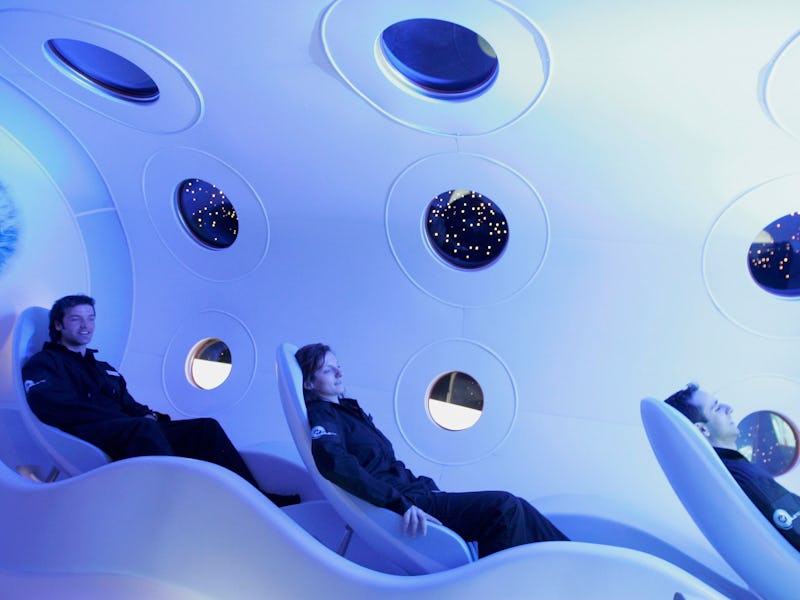Space Engineer: "Physics" Says $250K Virgin Galactic Ticket Prices Won't Drop Soon
Current costs are about the same as NASA space shuttles.

With all the hype and bluster around Richard Branson’s space adventures, it may be easy to assume that Virgin Galactic’s SpaceShipTwo is using cutting-edge technology that will make its $250,000 ticket price feasible. But no. In fact, mile for mile, that price is about the same as what it would’ve cost back in the Space Race days.
“Rocket planes could have been done 40, 50 years ago, and taking passengers wherever on a flight,” Fabian Eilingsfeld, an engineer and guest lecturer at the International Space University, tells Inverse. The price of Virgin Galactic is not groundbreaking at all, and if anything shows how little progress we’ve made.
Considering the amount of energy Virgin Galactic will need to jet off, the price per watt equates roughly to the price set by the NASA space shuttles. Originally, NASA’s experts hoped they could reach a price of around $293 per kilowatt-hour, but they missed that target. They missed it by a lot. In fact, over the 30-year history of the program, the average price per kilowatt-hour was a staggering $7,095.
The problem is the amount of energy needed to move an object of one size hasn’t really changed. It’s not going to change, either. “It’s unforgiving Newtonian physics,” says Eilingsfeld.
Didn’t the space shuttle cost billions of dollars, though? Yes, but Virgin doesn’t want to go as far as NASA did. Virgin Galactic is only offering sub-orbital spaceflight, where the spacecraft enters space but does not have enough energy to complete one orbit of the Earth and instead comes back down. Virgin’s sub-orbital flights will use about 3 percent of the energy that the space shuttle used, which means a far cheaper flight on the same approximate kilowatt-hour rate.
That doesn’t mean there’s no room for cost reductions. If space companies can get a large amount of people booking holidays in the stratosphere, they may have a fighting chance of pushing those numbers down.
The big goal, one that could theoretically be achieved through economies of scale, is $50,000 per orbital flight. “That was deemed the holy grail, and we could actually build a model with that cost, but that involves many thousands of passengers per year,” says Eilingsfeld. “You would need vehicles which are very reliable, and replacement parts available after every flight.”
You would need a whole fleet, not just three or four shuttles, as well. “If you are able to fly a vehicle, say, once a day, then you will bring down costs significantly,” says Eilingsfeld. This goes some way toward explaining why NASA’s original estimates were so far off: It was envisioned there would be somewhere around the region of 70 flights per year, facilitating a more frequent reuse of flight gear. Those calculations turned out to be far off.
So, considering a sink in the price of space tickets depends on getting enough people interested, but orbital day trips are starting off at the price of a small house, the vicious circle at the onset of space tourism seems troubling. But let’s be realistic: Even at a “holy grail” cost of $50K a ticket, commercial space flight could well stay out of the hands of you, me, and most other normal people, anyhow.